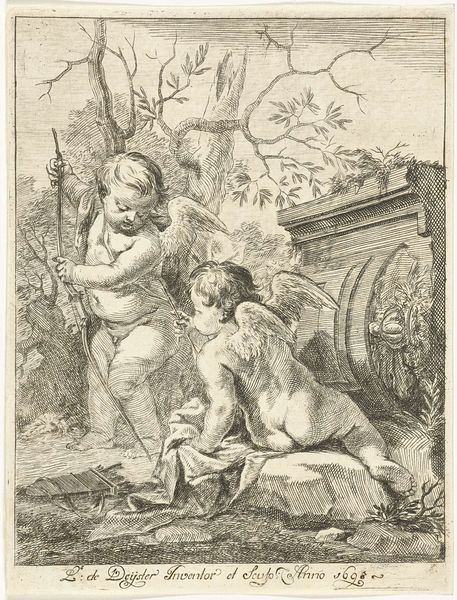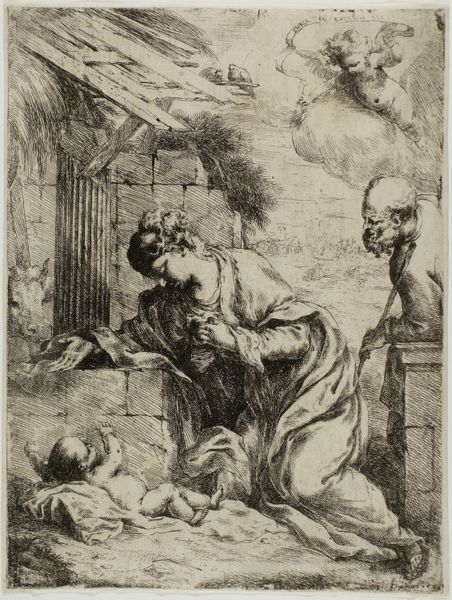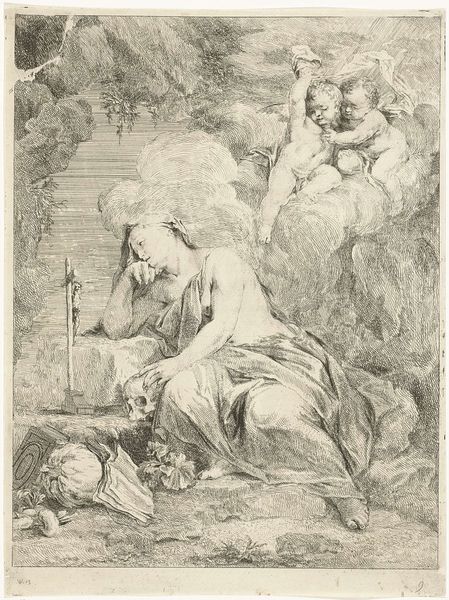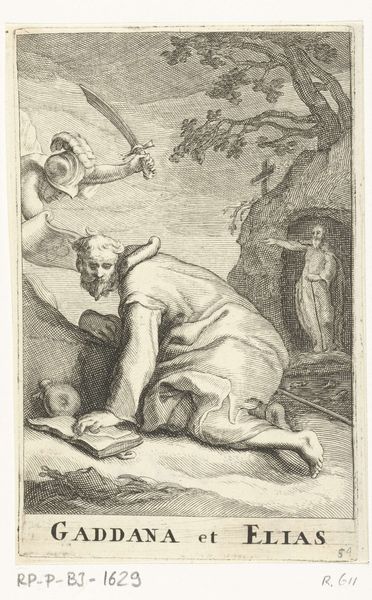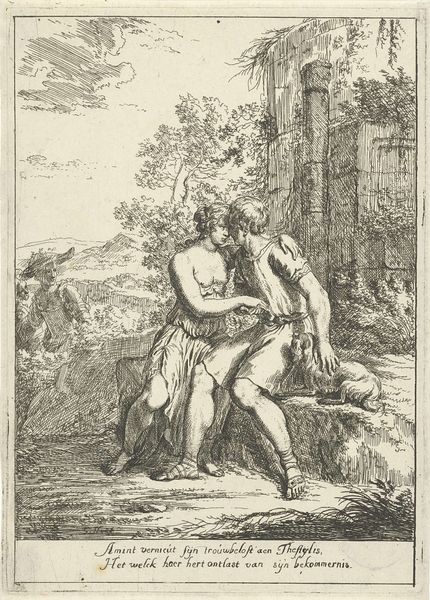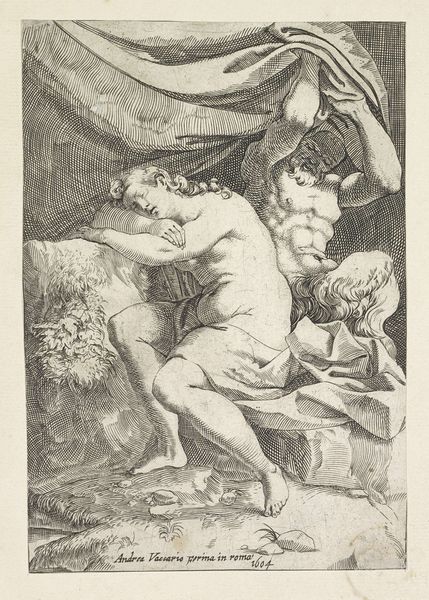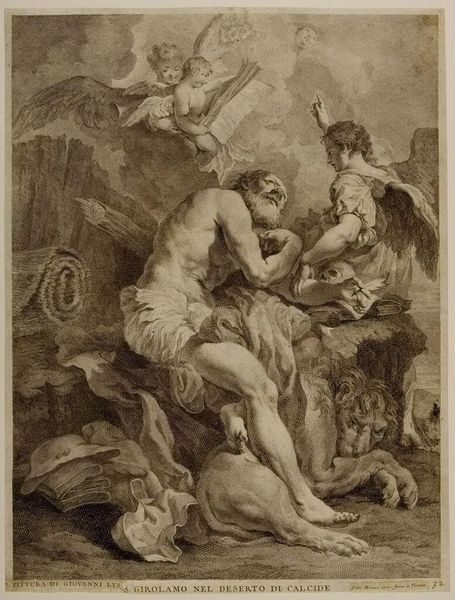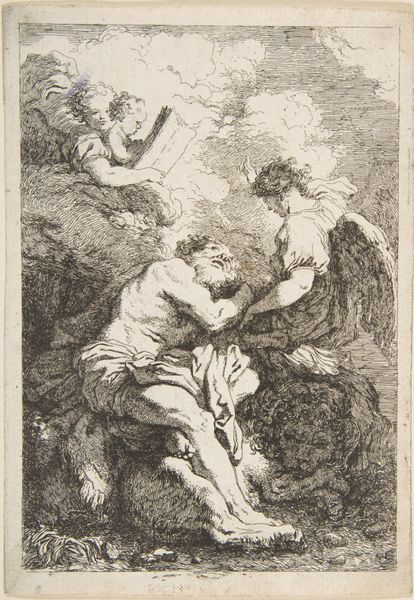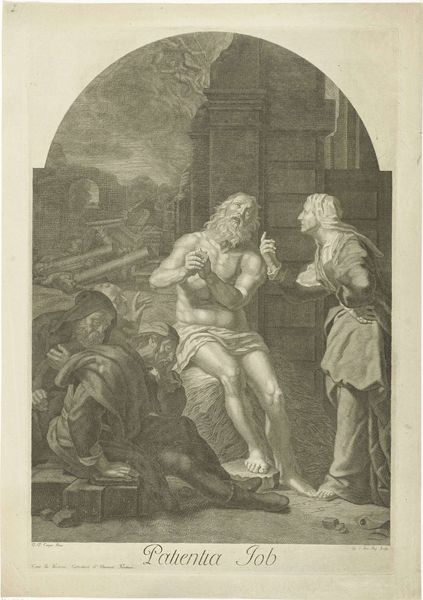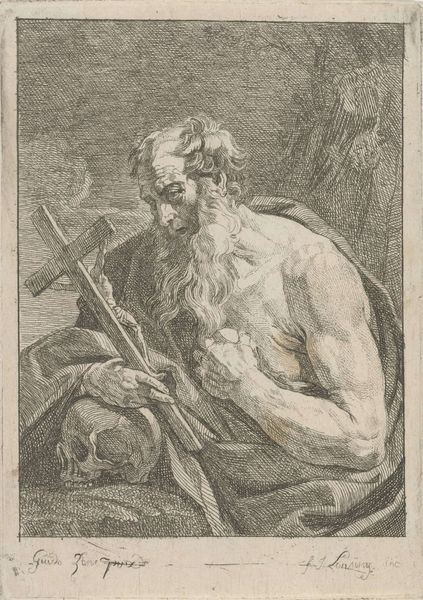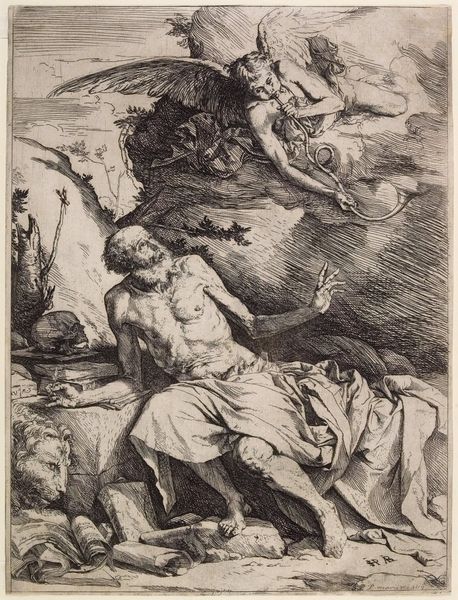
print, etching
#
portrait
#
baroque
# print
#
etching
#
caricature
#
figuration
#
line
#
history-painting
Dimensions: height 166 mm, width 123 mm
Copyright: Rijks Museum: Open Domain
Curator: This etching, titled "Heilige Hiëronymus," or Saint Jerome, was created sometime between 1666 and 1711 by Louis de Deyster. The artwork depicts St. Jerome in a sparse landscape, leaning against books with a lion at his feet. Editor: It strikes me as… introspective. The composition leads your eye from the bright light in the upper right down to the shadowed lion. It's an odd mix of peace and contemplation, rendered through delicate lines, yet you perceive the implied struggle of this desert saint. Curator: Well, Louis de Deyster lived and worked in a time of significant shifts in artistic patronage. The rise of academies and the emphasis on history painting placed a particular pressure on artists to demonstrate learnedness and technical skill through their works, often relying on a canon of themes and figures to display allegorical scenes and ideas. Jerome here as a church father connects Deyster’s production with wider society, but in a controlled fashion through traditional imagery. Editor: Exactly, and what’s really intriguing is to consider the image of St. Jerome in relationship to ideas about gender, knowledge, and authority. The choice to depict the saint, partially unclothed and clearly in a space of isolated reflection, calls attention to the performativity of masculinity that the Baroque style promoted to establish political control through religious institutions. Curator: His intellectual pursuits are visually associated with humility and penance, as seen in the nearly bare setting and the cross at the wall. Editor: Right. Consider how these elements intersect. He's portrayed not as a physically dominant figure but as an intellectual. Even the lion appears to be at rest—tamed by the saint's presence, implying control of his base instincts by intellectual pursuits. It highlights how religion and societal norms sought to control behaviors and power through constructed images. Curator: His choice to show St. Jerome at all speaks volumes of art institutions themselves. Highlighting the figure in artwork has helped affirm their educational and moral agendas for centuries. Editor: Definitely, and by presenting this within art collections and historical contexts, museums continue this long legacy, prompting conversations about the representation of power and virtue but from contemporary theoretical approaches that enable viewers to assess critically the image making in broader cultural implications. Curator: Food for thought about the dynamics behind these saintly figures! Editor: Indeed! A great chance for reflection, definitely.
Comments
No comments
Be the first to comment and join the conversation on the ultimate creative platform.
